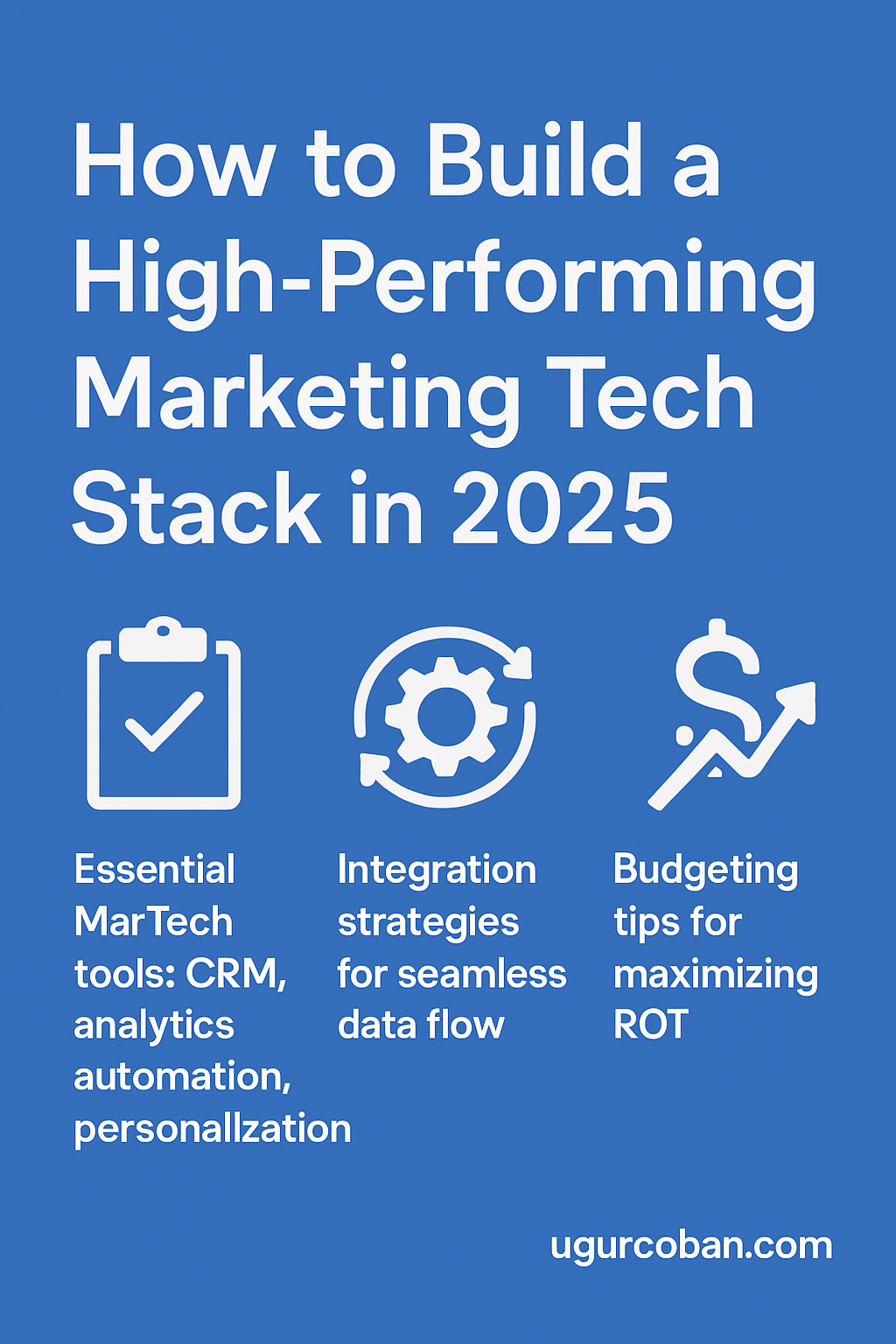In the ever-evolving world of digital marketing, staying ahead of the curve requires more than just creativity and strategic thinking. Today, success depends on leveraging a high-performing marketing technology stack (MarTech stack) that drives efficiency, improves targeting, and delivers a seamless customer experience. As we enter 2025, the MarTech landscape has become even more complex and competitive, making it essential to build a tech stack that is both agile and integrated.
This comprehensive guide explores the key components of a modern marketing tech stack, how to integrate tools for seamless data flow, and budgeting strategies to maximize ROI. Whether you’re a startup building your first stack or an enterprise optimizing an existing one, this article will serve as your roadmap.
1. Essential MarTech Tools for 2025
A well-rounded MarTech stack includes tools across various categories, each designed to address a specific aspect of marketing operations. Here are the foundational elements:
a. Customer Relationship Management (CRM)
CRM tools are at the heart of any marketing tech stack. They help you manage and analyze customer interactions throughout the buyer journey. In 2025, advanced CRMs like Salesforce, HubSpot, and Zoho offer AI-powered insights, real-time engagement tracking, and enhanced automation features.
Key Features to Look For:
- Unified customer profiles
- AI-based lead scoring
- Omnichannel communication tracking
- Seamless sales and marketing alignment
b. Marketing Automation Platforms
Automation tools help marketers streamline repetitive tasks such as email campaigns, social media scheduling, and lead nurturing. Platforms like Marketo, ActiveCampaign, and Mailchimp have evolved to include sophisticated workflow builders, dynamic content delivery, and AI-based personalization.
Benefits:
- Increased efficiency
- Scalable campaigns
- Enhanced lead nurturing
- Consistent brand messaging
c. Analytics and Business Intelligence Tools
Data-driven decision-making is more important than ever. Tools like Google Analytics 4, Tableau, Looker, and Adobe Analytics provide insights into user behavior, campaign performance, and ROI metrics.
2025 Trends:
- Predictive analytics using machine learning
- Cross-device and cross-platform tracking
- Real-time dashboards
- Enhanced data visualization
d. Personalization Engines
Delivering a personalized customer experience is no longer optional. Tools like Dynamic Yield, Optimizely, and Segment help tailor content, product recommendations, and user journeys based on real-time behavior and historical data.
Why It Matters:
- Higher engagement rates
- Improved conversion rates
- Better customer retention
e. Customer Data Platforms (CDPs)
A CDP collects and unifies data from various sources to create a single, 360-degree view of the customer. In 2025, CDPs play a vital role in enabling personalized marketing, predictive modeling, and attribution analysis.
Top CDPs:
- Segment
- BlueConic
- Treasure Data
- mParticle

2. Integration Strategies for Seamless Data Flow
A high-performing marketing tech stack isn’t just a collection of tools—it’s a unified ecosystem. Without proper integration, your stack will become a data silo nightmare, undermining your marketing performance.
a. Use an Integration-First Approach
When selecting tools, prioritize platforms that offer robust APIs and native integrations. Check compatibility with your existing systems and choose solutions that support flexible workflows.
b. Middleware Solutions
If direct integrations aren’t available, middleware platforms like Zapier, Workato, and Tray.io can help bridge the gap. These tools automate workflows between different apps and reduce manual data entry.
Advantages:
- Streamlined operations
- Reduced human error
- Faster data syncing
c. Centralize Data Management
Leverage a CDP or data warehouse (like Snowflake or BigQuery) to centralize all customer data. This ensures consistency across platforms and provides a single source of truth for analytics and personalization.
d. Align Marketing and IT Teams
Cross-functional collaboration is critical. Involve your IT team in tool selection and integration planning to avoid security pitfalls and ensure smooth deployment.
e. Monitor and Optimize
Regularly audit your integrations and monitor data flow. Use tools like Segment Protocols or Datadog to detect inconsistencies, latency issues, or data loss.
3. Budgeting Tips for Maximizing ROI
Building a MarTech stack is a significant investment. To ensure you get the most value, it’s essential to budget strategically.
a. Set Clear Objectives
Start by defining your marketing goals. Are you aiming to increase leads, improve conversion rates, or enhance customer retention? Your objectives will guide tool selection and budget allocation.
b. Categorize Your Spend
Break down your budget by categories such as CRM, automation, analytics, content management, and personalization. This helps in identifying high-performing tools and potential redundancies.
c. Prioritize Scalable Solutions
Choose tools that can grow with your business. A solution that meets your current needs but fails to scale will lead to costly migrations later.
d. Leverage Freemium and Tiered Pricing Models
Many platforms offer free tiers or scaled pricing. Start with lower-cost plans and upgrade as your needs evolve.
e. Measure ROI Regularly
Use KPIs like customer acquisition cost (CAC), lifetime value (LTV), and marketing attribution to evaluate tool performance. Replace underperforming tools with better alternatives.
f. Negotiate Contracts
Don’t settle for sticker prices. Negotiate with vendors for custom pricing, especially if you’re bundling tools or committing to long-term contracts.
g. Invest in Training
A powerful tool is only as effective as the team using it. Allocate part of your budget to employee training and certifications.
Future-Proofing Your Marketing Tech Stack
As new technologies emerge, your MarTech stack must evolve. Stay informed about advancements in AI, machine learning, and data privacy regulations. Regularly review your tools and strategy to ensure alignment with your business objectives.
Trends to Watch in 2025:
- Increased adoption of AI-generated content
- Voice and visual search optimization
- Blockchain for data security and transparency
- Cookieless tracking solutions
Building a high-performing marketing tech stack in 2025 requires a strategic, data-driven approach. By focusing on essential tools, seamless integration, and smart budgeting, you can create a powerful ecosystem that drives growth, enhances customer experiences, and delivers measurable results.
Now is the time to future-proof your marketing operations—one tool, one integration, and one insight at a time.